Companion Plants For Ginger
Ginger (Zingiber Officinale) is a versatile and easy-to-grow spice that adds flavor and zest to various cuisines around the world. With its culinary importance and medicinal properties, ginger is a valuable plant to cultivate. However, like any plant, ginger needs certain conditions and companions to reach its full potential. This is where the age-old technique of companion planting comes in. I will discuss all about what and what not to plant next to ginger.
Companion planting involves growing different plant species together in a way that benefits one or more of the plants. The practice dates back centuries and continues to be an integral part of sustainable gardening. When done right, companion planting can enhance the growth, productivity, and pest-resistance of ginger. It can also attract beneficial insects while deterring pests.
I have explored ideal companion plants for ginger along with incompatible ones. I will also provide practical tips for implementing companion planting successfully. So let’s dig in!
Companion Planting
Companion planting is based on the idea that certain plant species can benefit from being grown together. For instance, tall sunflowers can provide shade for lower-growing ginger plants. On the other hand, legumes like peas can supply nitrogen to nutrient-loving ginger.
This mutualistic relationship between plants has been leveraged for centuries by indigenous communities. A great example is the Three Sisters technique used by Native American tribes. This method involves growing corn, beans, and squash together so that each crop supports the others.
In addition to promoting plant growth, companion planting also:
- Attracts beneficial insects like ladybugs and lacewings
- Repels pests like aphids, spider mites, and beetles
- Maximizes garden space and resources
However, companion planting takes more than just grouping random plants together. Factors like sunlight requirements, nutrient needs, and harvesting times need careful consideration too.
For more information about Houseplants you can visit: 10 Rare Calathea Varieties
Ginger (Zingiber officinale)
Before selecting ideal companions for ginger, let’s first understand its growth needs and preferences:
- Climate: Ginger thrives in hot, humid tropical and subtropical climates. It requires at least 8-10 months of warm weather with average temperatures between 70°F to 90°F.
- Hardiness: Ginger grows best in USDA hardiness zones 9 through 11. It cannot withstand freezing temperatures.
- Soil: Ginger needs rich, loose, well-draining soil with a pH between 6.0-6.5. Clay-heavy soil should be amended with compost.
- Sun: Ginger grows best in filtered sunlight or partial shade, especially in hot summer afternoons.
- Water: 1-1.5 inches of water per week is ideal, with the soil kept consistently moist but not soggy. Reduce watering in winter.
Wind Protection: I shelter ginger from strong winds which can damage the stems and leaves.
Best Companion Plants for Ginger
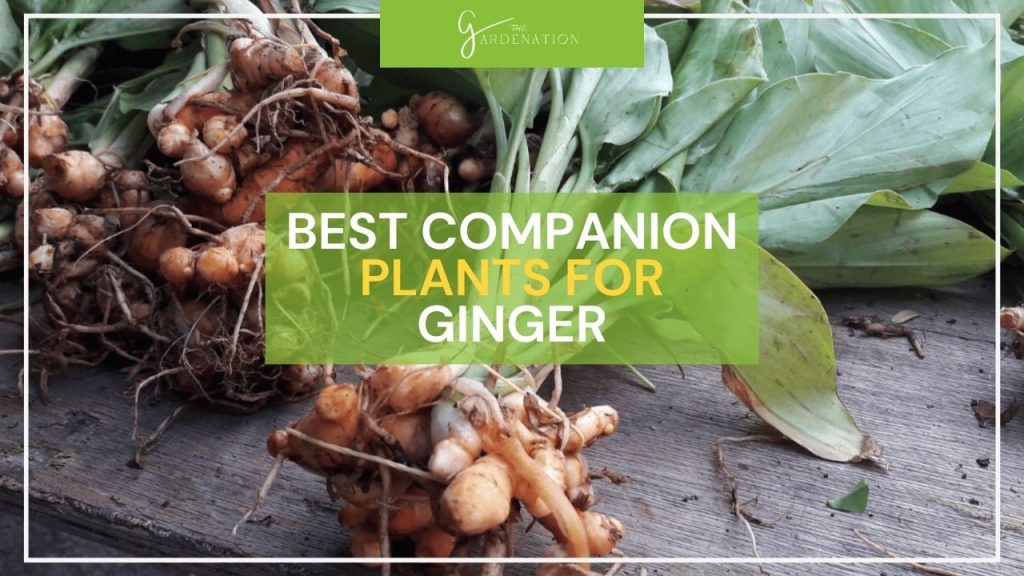
Here are some of the best companions that enhance ginger’s growth and flavor in mutually beneficial ways:
Flowering Annuals and Perennials
Sunflowers: The tall, leafy annuals provide the perfect filtered shade that ginger loves. Sunflowers also attract pollinators while repelling pests like aphids and beetles.
Nasturtiums: These edible flowers deter pests like whiteflies, squash bugs, and beetles. Their trailing vines also make good living mulch around ginger.
Hibiscus: With their bright, tropical blooms, hibiscus make excellent companions for ginger. Their shade and moisture-retentive qualities foster faster ginger growth.
Fruit and Vegetables
Bananas: Bananas share the same growing needs as ginger. Plus, banana trees provide the ideal filtered sunlight and wind protection that ginger requires.
Legumes: Bush beans, pole beans, and peas enrich the surrounding soil with nitrogen through their root nodules. This benefits nutrient-loving ginger.
Garlic: The two root crops repel common pests when grown together. Garlic also enhances the flavor and medicinal value of ginger.
Chili Peppers: Their shallow roots don’t compete for nutrients while their spicy aroma repels certain pests like fungus gnats and cabbage worms.
Fruit Trees: I grow ginger around mature fruit trees to benefit from the dappled shade and moisture retention properties. Citrus trees, in particular, make good companions.
Spinach: The lush and fast-growing green thrives in the same partially shaded and moist conditions as ginger. It also repels certain beetles and moths.
Sweet Potatoes: Both root crops prefer similar growing needs. Plus, sweet potato vines provide protective ground cover for developing ginger rhizomes.
Herbs
Turmeric: Closely related to ginger, turmeric makes an excellent companion by deterring a range of pests from ants to nematodes.
Cilantro: Known to enhance the growth and flavor of neighboring plants, cilantro attracts predatory insects that prey on ginger pests.
Lemon Grass: With its strong citrusy aroma, lemon grass repels certain insects and provides the partial shade that ginger enjoys.
Worst Companion Plants for Ginger
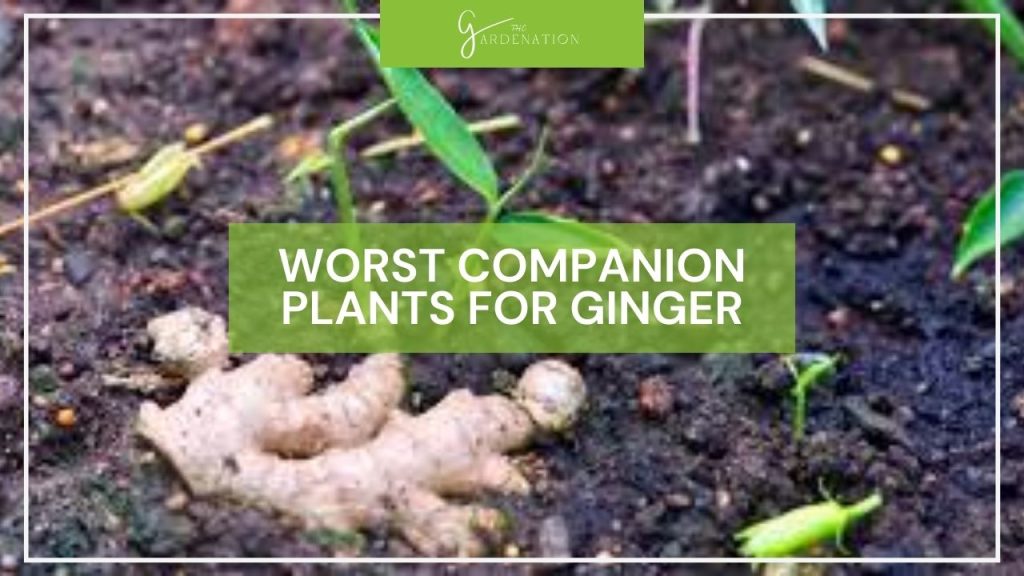
On the flip side, some plants can stunt the growth of ginger or create favorable conditions for diseases:
Walnut Trees: Walnuts release a chemical called juglone that inhibits the growth of some plants like ginger.
Tomatoes & Eggplants: These nightshades often suffer from the same pests and diseases as ginger, like bacterial wilt, nematodes, and fungus. Proximity can spread these easily between the crops.
In general, I avoid planting ginger near other moisture-loving plants with aggressive root systems. This prevents excessive competition for water and nutrients.
Tips for Companion Planting with Ginger
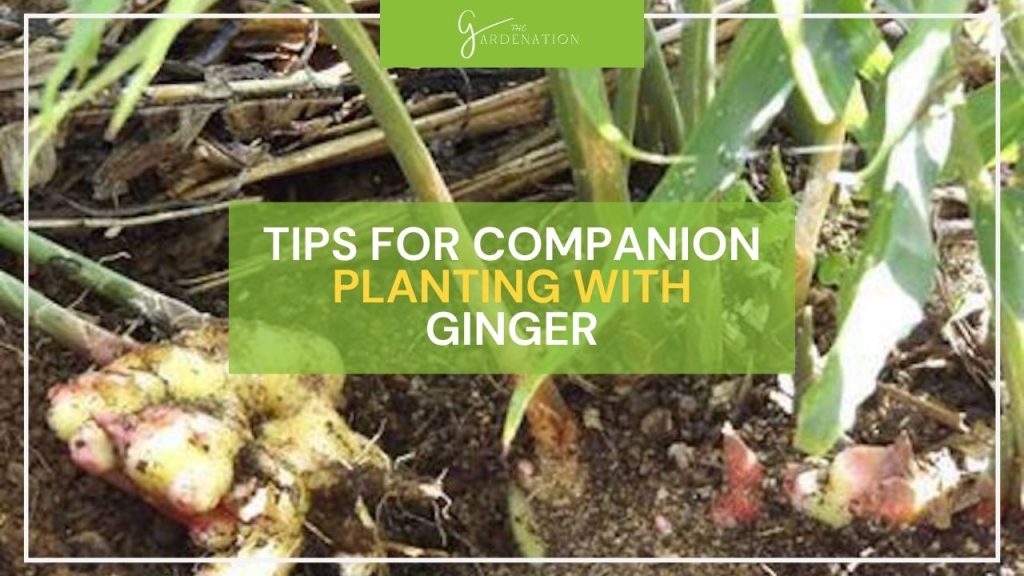
Here are some top tips for successfully growing ginger with companion plants:
1. Optimize planting layouts

I plan positions carefully, considering mature plant sizes, shade patterns, and compatibility. For example, I plant tall sunflowers on the north side of lower-growing ginger.
2. Practice crop rotation

I rotate ginger and its companions to different beds each year to prevent disease and nutrient deficiencies.
3. Enrich the soil

I mix in several inches of aged compost or manure before planting. I also grow nutrient-fixing green manures prior to ginger.
4. Provide support structures

I install trellises and cages to support vining crops like pole beans and sweet potato vines. This prevents overshadowing of ginger plants.
5. Mulch thickly

Natural mulches like wood chips moderate soil temperature and retain soil moisture while suppressing weeds.
Companion Planting Mistakes
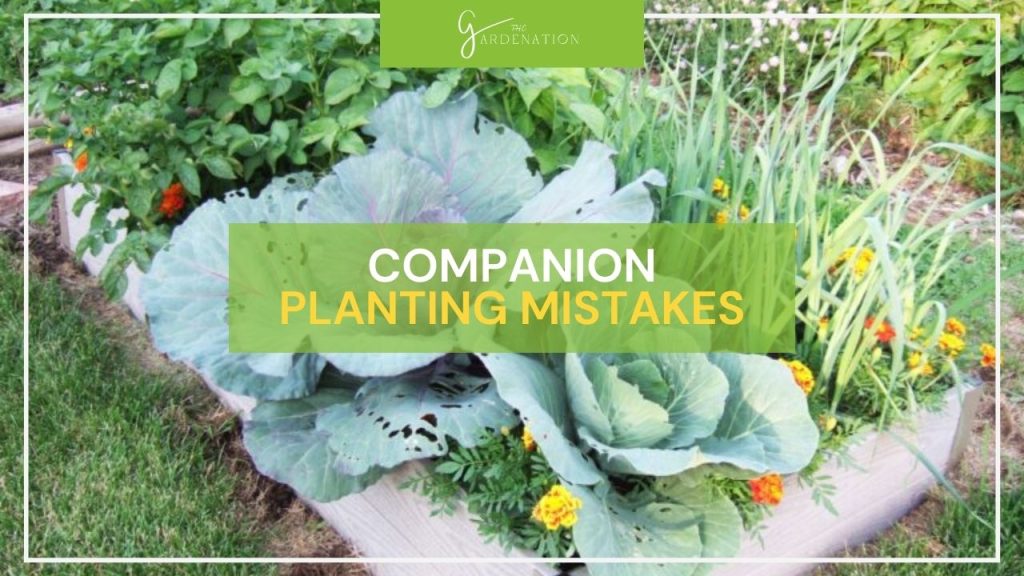
Here are some common companion planting mistakes that can negatively impact ginger:
- Overcrowding plants: I space plants appropriately so that once mature, their leaves and roots don’t compete excessively for space, air circulation, sunlight, and nutrients.
- Ignoring planting times: I sow companion crops together or with minimal time lags for them to grow harmoniously. I consider differences in maturation rates too.
- Introducing invasive companions: Vigorous companions can easily outcompete ginger for nutrients and water due to their aggressive growth habit or dense root systems.
- Allowing shade-lovers to overshadow ginger: While ginger enjoys filtered sunlight, too much shade from uncontrolled companion growth can reduce productivity.
Case Studies
Several gardeners have reported great results from companion planting ginger:
Agatha from Florida shares that interplanting ginger with sweet potatoes and lemongrass has boosted her ginger harvest by 25% over two growing seasons. The lemongrass repels aphids while the sweet potato vines protect developing ginger rhizomes. She rotates the crops across her raised beds to maintain healthy soil.
James from Texas had trouble with his potted ginger contracting fungal disease. On advice from fellow gardeners, he repotted it with cilantro and nasturtiums. Within weeks, the ginger showed signs of recovery thanks to the pest-repelling and growth-enhancing effects of its new companions.
Frequently Asked Questions
How many companion plants can be grown with ginger in a small home garden?
For a small 8 ft x 4 ft ginger patch, limit companions to 2-3 plant species. Choose taller backdrop plants like sunflowers along with 1-2 mid level or foreground crops like bush beans and cilantro.
Can flower companions like marigolds be grown together in the same container as ginger?
Yes, compact flowering annuals can make attractive container companions for ginger. Choose mini marigold varieties and include other beneficial herbs like mint or parsley.
Will companion planting ginger reduce my yield per plant?
On the contrary, thoughtfully selected companions can boost ginger yield and rhizome size by up to 25% thanks to nutrient enrichment, moisture retention, and pest protection benefits.
What are some good companion plants for indoor potted ginger?
Indoor ginger companions should be pot size-compatible. Try mini cilantro, dwarf marigolds, parsley, chives, basil, or shade-giving lettuces. Maintain proper spacing and soil moisture.
Can I grow ginger companions from seeds vs. seedlings or mature plants?
Growing companions from seeds is an economical option. Just sow earlier for them to establish by the time ginger sprouts. Or start seeds in biodegradable pots before transplanting together.
Conclusion
Companion planting is an age-old, sustainable way to create thriving gardens by growing mutually beneficial plant partners together. As I learned, ginger has several fantastic companions that improve its growth, flavor, and pest resistance considerably. On the other hand, a few plants can stunt or harbor diseases among ginger crops.
Hopefully, the comprehensive growing guide above gives you clarity on selecting ideal planting companions for ginger. Do share your own companion planting success stories with ginger!

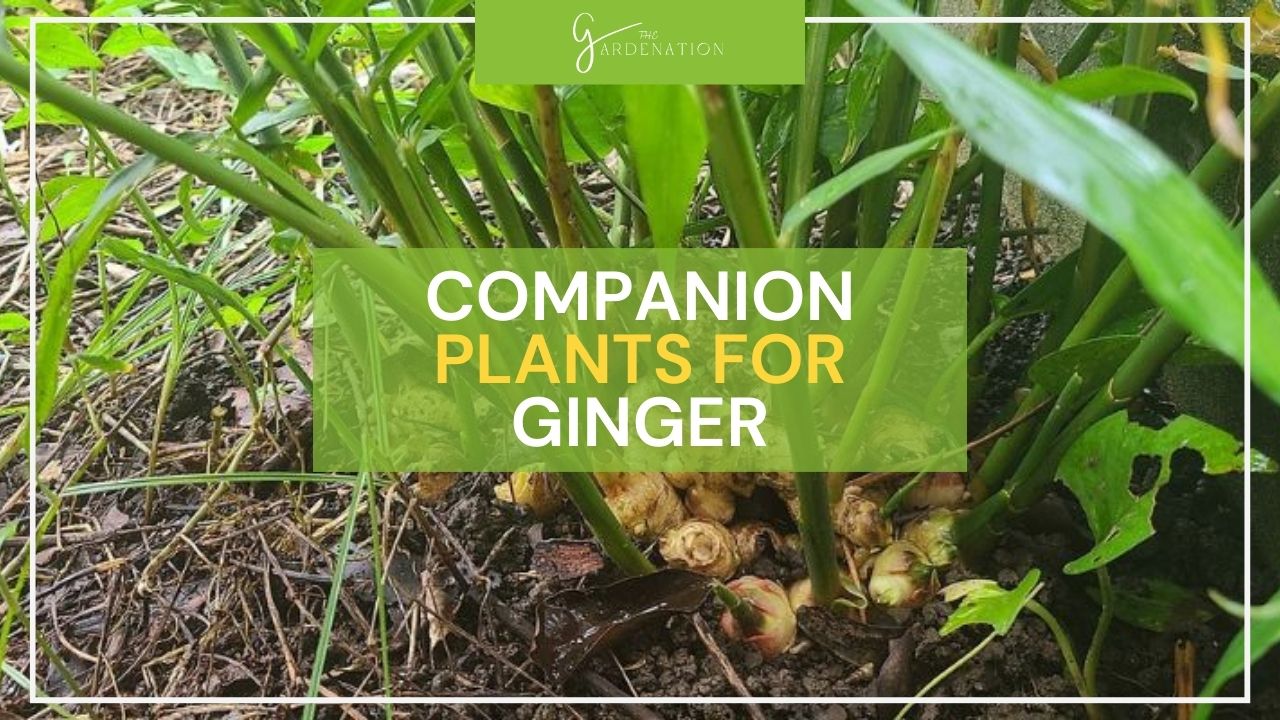
One Comment